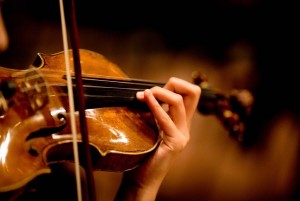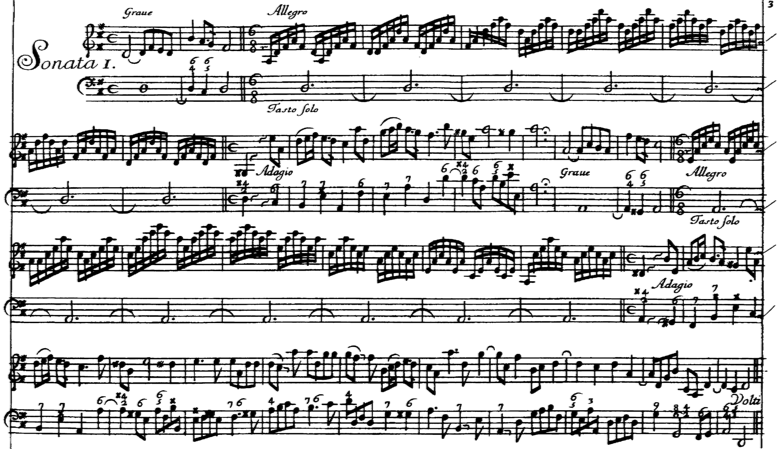MUSC 233: Studies in Performance Practices
Dr. Tim Carter (with Dr. Nicholas DiEugenio, violin)
 The study of performance practice marks a point where the performer and the musicologist come into direct contact, whether as allies (one hopes) or as enemies (as is often thought to occur). As performers you have already developed an impressive set of skills, but does musicology have anything to add to them? For example, you have been learning an instrument (or voice) for years, developing your technique and extending your repertory; you have also been cultivating your sensitivities in terms of musical interpretation. But when interpreting a musical work in performance, where do your responsibilities lie? To what you think the composer may have intended; to what you think an audience of the composer’s time might have heard; to your own innately musical self-expression; to the audience that has done you the honor of coming to hear you perform? You might well answer “All of the above (and more).” What happens, however, when these and other responsibilities come into potential or actual conflict one with the other?
The study of performance practice marks a point where the performer and the musicologist come into direct contact, whether as allies (one hopes) or as enemies (as is often thought to occur). As performers you have already developed an impressive set of skills, but does musicology have anything to add to them? For example, you have been learning an instrument (or voice) for years, developing your technique and extending your repertory; you have also been cultivating your sensitivities in terms of musical interpretation. But when interpreting a musical work in performance, where do your responsibilities lie? To what you think the composer may have intended; to what you think an audience of the composer’s time might have heard; to your own innately musical self-expression; to the audience that has done you the honor of coming to hear you perform? You might well answer “All of the above (and more).” What happens, however, when these and other responsibilities come into potential or actual conflict one with the other?
The rise of so-called Historically Informed Performance (HIP) was for a long while associated with “early music,” i.e., Medieval, Renaissance, and Baroque repertories dating from before the main “Bach to Brahms” canon of Western art music (although Bach’s place has always been problematic therein). We used to call it “authentic performance” (though no one uses the term nowadays, for reasons we will discuss) or “period performance.” By one reading, HIP emerged as a reaction against twentieth-century musical modernisms, i.e., as the avant-garde turned away from that canon and made itself increasingly inaccessible. By another reading, it was just another form of anti-canonic modernism if in a safer musical form. But whether reacting against or supporting musical modernism, the early-music revival, and the attitudes it engendered, ended up attacking from the rear the Western canon, or at least, the canonic (for which read “Romantic”) ways in which it was traditionally performed.
By the end of this course you will:
- know the history of, and the thinking behind, the arguments for and against HIP;
- grasp the strengths and weaknesses of the musical, textual, and visual sources conventionally used as a basis for HIP;
- understand how the musical editions from which you perform came about, and what they contain (and what they do not);
- question with fresh eyes and ears the music you are studying and performing;
- develop some of the many survival skills necessary for performers in the modern musical world;
- feel immeasurably superior to those of your colleagues who remain staunchly un-hip whether out of ignorance or because of prejudice.
MUSC 233 meets in Person Recital Hall on Tuesdays and Thursdays from 9:30 to 10:45 am. It provides 3 credit hours towards graduation. The prerequisite for the course is MUSC 254.

